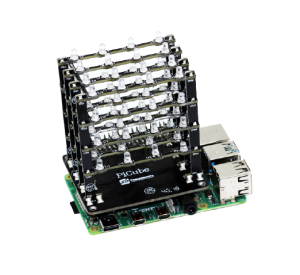Difference between revisions of "PiCube"
From SB-Components Wiki
(Created page with "<div class="row"> <div class="large-8 column"> == Pico Cube == === Features === === Specifications === </div> <div class="large-4 column"> File:picube.png|thumb|lef...") |
|||
| Line 11: | Line 11: | ||
</div> | </div> | ||
<div class="large-4 column"> | <div class="large-4 column"> | ||
| − | [[File: | + | [[File:Picube.png|thumb|left|alt=Pico Cube| Buy it From : ''[https://shop.sb-components.co.uk/products/picube-4x4x4-led-cube-kit-for-raspberry-pi Click Here]'']] |
</div> | </div> | ||
</div> | </div> | ||
Revision as of 12:01, 29 October 2021
Pico Cube
Features
Specifications

Buy it From : Click Here
Pinout
Installation
Python
- Stack PiCube on Raspberry Pi 40 Pin GPIO header.
- Open Git Bash Terminal and clone/download the repository by typing the below command in the terminal:
git clone https://github.com/sbcshop/PiCube.git
- Your code will be downloaded to the '/home/pi' directory. Use the 'ls' command to check the list of directories and the 'cd' command to enter the directory.
cd PiCube
- 'demo.py' is an example code for PiCube. Run test file and play with PiCube by running below python command.
python3 demo.py
It will run a different LED pattern on Pico Cube. You can also modify this code to put your own creativity.
